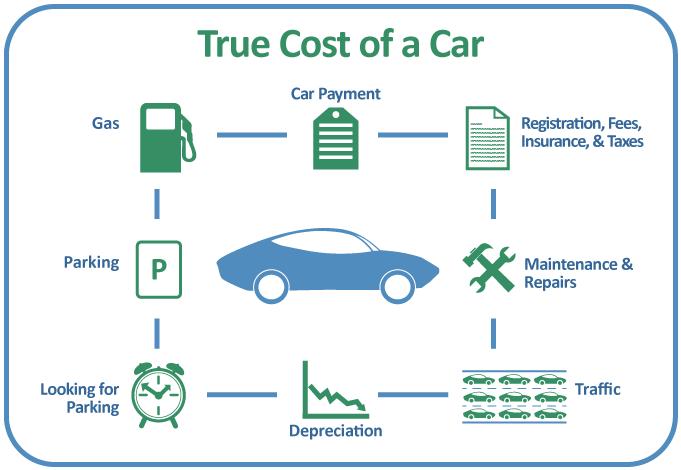True Cost of Car Ownership
It costs money to get around. When hopping on transit, renting a scooter, or hailing a ride, you generally know the cost of the trip upfront, before you start your journey. It is a bit trickier, however, to calculate the true cost of driving your own car. Let’s take a closer look at these costs…
- There are the obvious costs like your monthly car payment, gas, and parking at your origin and/or destination. Add to that the somewhat less obvious “pay and forget” costs that come up regularly or semi-regularly, like registration, fees, taxes, and insurance, as well as maintenance and repairs.
- Then there are those costs that are harder to quantify, like the time spent looking for parking if you don’t have a designated space, or the inconvenience of having to park far from your destination. Traffic is never a fun way to pass the time, but at least in other modes like transit or ridesharing, you can read, nap, or just relax.
- And finally, there’s the depreciation of the car. While not a direct cost, depreciation is ultimately a loss that accumulates over the car’s lifetime.

Having a car always at your disposal can be convenient but, for something that sits idle (parked) on average 95% of the time, 1 it may be at a high “cost per trip” price. By choosing an alternative to car ownership, you may both save money and reduce your environmental impact.
